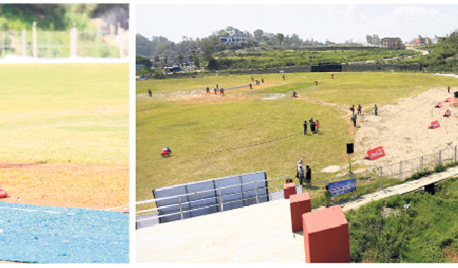
OR
Expedite capital spending
Published On: December 22, 2019 11:13 AM NPT By: Republica | @RepublicaNepal
One of the biggest ironies of Nepal’s budget system has been that while the country somehow manages to allocate budget for development of infrastructure projects, huge portion of such budget remains unspent, even frozen in some cases. During the pre-budget discussion period, leaders from local, provincial and federal spheres demand money for different development activities. The respective governments address their concerns too by allocating it for the development projects demanded by them. But at the end of the fiscal year, very little of the allocated budget is spent, putting the development works in limbo. This has been going on for decades. This had to completely change after the country executed the federal system—which, in principle, has made it easier for these governments to expedite development works in their respective constituencies. But in practice very little has changed.
Take the data of the first four months of the current fiscal year. According to Financial Comptroller General Office (FCGO), total expenditure as of Wednesday stands at 20.17 percent, or Rs 309.19 billion, of the total budget. The government introduced the budget of Rs 1,532.97 billion for FY2019/20 this year but it has not managed to spend more than 9.25 percent, or Rs 38.2 billion, of the total capital budget of Rs 408 billion. Slow pace of spending has consequences. First, project development process itself goes slow, hampering the prospects of economic and social developments the timely completion of such projects could unleash. Second, when capital spending goes at slow pace in the first quarter of the fiscal year, it tends to increase in the second and third quarters. We have had several precedents of capital spending expedited at the last few months of the fiscal year, which has come to mean that works get done in hurry along with a lot of financial irregularities. The infamous Asare bikas, metaphor for capital spending at the last days of the fiscal year, has taken toll on quality and durability of the works as well. Only solution to this is to plan well and spend the capital from the beginning of the fiscal year. It is mainly to help this process that the constitution itself has institutionalized the provision of announcing budget in Nepali month of Jeth, two months before the fiscal year actually begins. But as things stand, even such constitutional arrangement has not helped us much especially in enhancing our capacity to spend the capital efficiently, transparently and qualitatively.
Good news is that secretaries of major ministries with the highest capital budgets—such as Ministry of Energy, Water Resources and Irrigation, Ministry of Water Supply, Ministry of Physical, Infrastructure and Transport and Ministry of Finance — have admitted this shortcoming and vowed to improve the performance in remaining months. Speaking at a meeting of the Finance Committee of the federal parliament on Thursday, they admitted that implementation of the capital budget is slow and this needs to change. There has been a general agreement among the stakeholders—secretaries, lawmakers and even ministers—that progress in spending has worsened and that if this trend continues it could breed frustration among people. They have also pointed that poor preparation and contract management system, land acquisition problem, and lack of skilled staff and mechanism have led to low spending. Truth is that these stakeholders themselves are responsible for removing such constraints. Nepal has to reverse the underspending trends of past several years. It is time to do away with this stigma of failing to spend what the country manages to allocate for its capital formation.
You May Like This

Budget for sports increased by 1.95 billion
KATHMANDU, May 30: The government has increased the budget for sports development by Rs 1.96 billion for the upcoming fiscal... Read More...

Over 30% of development budget spent in 12th month
KATHMANDU, July 18: The government has spent 30 percent of the development budget in the final month of the last fiscal... Read More...

With less than a month left in fiscal year, 62% development budget still unspent
KATHMANDU, June 17: The government’s capacity to spend the development budget remained weak in the first 11 months of the current... Read More...







Just In
- Health ministry to conduct ‘search and vaccinate’ campaign on May 13
- Indian customs releases trucks carrying Nepali tea, halted across Kakarbhitta
- Silent period for by-election to begin from midnight
- SC issues short-term interim order to govt and TU not to take immediate action against TU legal advisor Khanal
- National consultation workshop advocates to scale up nutrition smart community in Nepal
- Patan High Court issues short-term interim order to halt selection process of NTB’s CEO
- NEPSE inches up 0.15 points; daily turnover increases to Rs 2.53 billion
- Bagmati Govt mandates tri-lingual signboards in offices











Leave A Comment